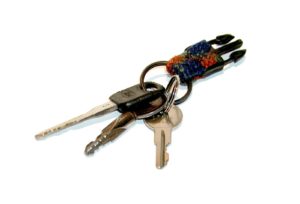Improve your driving confidence
In 1994 I stopped driving completely after having a number of very stressful near misses and problems with the car. My driving confidence had dropped to 0 and I tried a number of times to get back in the driving seat but all attempts failed. I developed Amaxophobia.
That was until I trained as a Solution-focused hypnotherapist back in 2007. When I understood how the brain worked, and what I was experiencing, and what I was doing was making it worse, I quickly stopped that behaviour and focused on my goal – Independence. My driving confidence plan can do the same for you.
Over the years I have worked with many people from all walks of life with all with different issues. However, they all have the same problem – they lack confidence in driving. With some people that lack of confidence comes from having accidents, with others, a particular place triggers the panic. So over the past 10 years, I have been creating my own programme to help others either understand what they need to do to change their situation or to get them back to driving again.
I developed the Driving Confidence Programme because it allows my clients to decide on the best course of action for them. If they want to carry on to stage 2 they can either go off and try it on their own or work with a driving instructor.
In 2020 I published a book called “Driving me crazy” which has proven to be very successful and in 2023 I took part in an international conversion held online to highlight how this can be debilitating and what you need to do to overcome it.
Stage 1 – Steps to building driving confidence
Step 1 – Understanding the history of the problem
You may think that all driving confidence issues stem from the same source, but they don’t. Every person is unique in their experiences, their history and the way they think. By going through someone’s history of anxiety, you can build a picture of the major influences. I use case studies to help my clients understand where their issues may lie. Not everyone has Amaxophobia for a start.
Step 2 – The brain and how it works
The brain is a complex piece of kit and we think what it’s telling us is the truth, but it’s not. When we feel threatened, our subconscious mind will do its damnedest to get us out of the situation. Looking at sleep patterns and brain chemistry, you can understand what you need to do to start changing your behaviour.
Step 3 – Destressing your life
You may not recognise that all the other stress in your life has an effect on your driving. By teaching you a variety of tools and techniques you can lower your general anxiety, as well as your driving anxiety. You will be taught relaxation and visualisation techniques as well as receive MP3’s to listen to, which will help.
Step 4 – Scrambling any unhelpful memories
Sometimes we have obsessive negative thoughts or memories around incidents which can often play back to us over and over again. We can change or irradicate them with a number of different processes. This may include NeuroLinguistic Programming (NLP) and Brain working Recursive Therapy (BWRT). These greatly help Amaxophobia.
Step 5 – Building confidence
Confidence building may take one session or a number to get you to the point where you move to step 6. The number depends on how much general stress you have under control. The Amaxophobia will remind you from time to time, but you can learn to recognise and ignore those thoughts.
Step 6 – Exposing yourself to the stressors
I help people define their goals for driving, not everyone is the same and some want to drive abroad. Whereas others want to just be able to drive to school to pick their kids up. Once you have established where you want to be, we devise a plan of action and gradually work your way towards your goal. Amaxophobia doesn’t have to rule your life.
Case Study
Leanne is a senior project manager and works for a large corporation. It means that at least twice a month she has to travel. From where she lives near Abingdon in Oxfordshire to Bath or Wigan. Since the birth of her children, Leanne has experienced more general anxiety, worrying about their health and safety.
It was whilst on holiday with the whole family they experienced a pile-up in front of them which finally tipped Leanne over the edge. Driving now was overwhelming. It was worse on bridges and wide expanses of motorways with large junctions. Such as Avonmouth coming off the M5 on to the M4 and around the top of the M40.
Her goal was to feel calm, not have that nagging negative voice in her head telling her she was useless. To think about all the wonderful benefits of being independent and able to drive anywhere at any time.
At the first session, she rated herself as a 2. She had managed to drive on an unfamiliar road and felt pleased with herself. A 3 was to find more unfamiliar roads to travel on. I explained how used Google Street when I went to new places and she thought it was an excellent idea. I taught her “Do 5 things” and to practice with her kids as a form of eye spy.
Getting good sleep helped
By session two, she was a 4. The MP3 helped with her sleep and as a result she felt more able to focus. She’d driven a few times on unfamiliar roads and been practising “Do 5 things”* with the kids. I taught her “Fofbos”* and she remarked how relaxed she felt and what a great tool it would be for meetings.
By week 3 she scored herself as 7 as it was a major achievement she felt at leaving the county. She was really upbeat, as she expanded on what her 10 would be like – the sense of freedom, how turning up for meetings at the head office would mean she was present and paying attention.
Learning swish
Up until now, she had been such a wreck on arrival as it took her hours to settle down. It meant she often missed important information, so she had been taking the train and staying overnight for a few months. Now she engaged a great deal more and her colleagues had noticed. I taught her to “Swish”* any negative thoughts. and we carried out a rewind of the large junctions and the accident she’d witnessed.
By session 4 she was an 8.5 and had achieved an impressive amount of motorway driving in the past fortnight, even picking up her parents and bringing them back to her house for Christmas. I taught her “Wonder woman”* and suggested a three week gap before the next session.
Session 5 and she was a 10. She’d managed to drive up to Wigan and back in the same day. She felt tired afterwards but not anxious and she was amazed how it had only taken such a short period to achieve and why hadn’t she done this sooner. We then chose a month gap to make sure everything was fine, and she reported things were back to how they had been before the kids were born. She had regained her independence and could concentrate on her career and family without this burden. She was glad to conquer her Amaxophobia.
At this point in the programme, it may be necessary to move to Stage 2 of the programme.
Stage 2
Stage 2 of the programme is all about putting Stage 1 to the test. Where I work with people locally this could mean I may even travel with them. It could mean they go for some drives with a qualified driving instructor.
By giving yourself small steps, you gradually build up confidence levels until you reach your goal. Some weeks could be just reducing stress, other weeks may be visualisation, other weeks driving a bit more each day. Chipping away at Amaxophobia is a small bit by bit process.
If they are taking a driving test, then this would be booked at this stage.
Also see:
Also see: Confidence building


